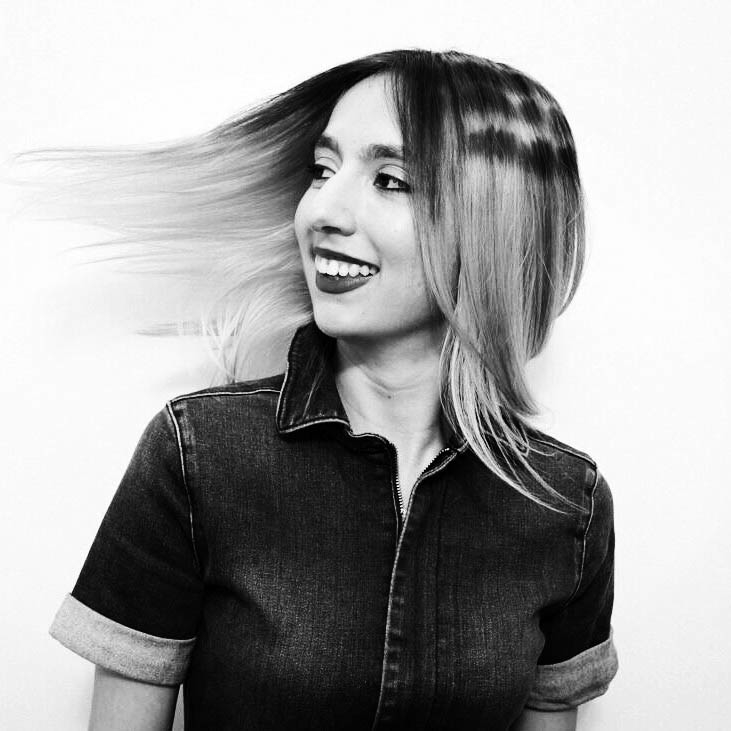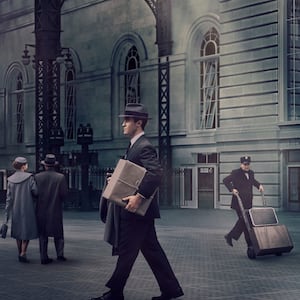The Marvelous Mrs. Maisel is on hiatus now, with its costumes dry-cleaned and safe under “beautiful plastic” in Donna Zakowska's Brooklyn studio.
However, the designer still dreams of the show's impressive array of marvelous coats.
“We're thinking about doing a line of four or five of them.” Zakowksa revealed to The Daily Beast. “So many people have written into me about wanting their own pink coat.”
The show's pink coats, and other vividly styled and colored clothes, are a hallmark of the award-winning Amazon show. In the first shot of the second season of The Marvelous Mrs. Maisel, which launches on Amazon on December 5, we see a department store mannequin in a canary yellow dress. It's covered by a plush mink stole that's paired with pressed white gloves and ample diamonds.
The gown looks like something Michelle Williams might wear to the Oscars, destining the actress to Best Dressed list glory. It’s not hard to imagine Elizabeth Taylor breaking some matinee idol’s heart in this dress during one long, climactic dinner party scene. (With Liz throwing a champagne flute at the wall, perhaps.)
But you only see this dress for about 10 seconds before the camera pans away, revealing a busy New York City street outside the department store where Miriam “Midge” Maisel, the show’s hero, works.
Before viewers have time to recover from the yellow dress, we’re give more costume porn—extras in pillbox caps, another mannequin in a blush pink taffeta gown, a glitzy shopper in a black dress and cone hat.
As the cliché goes, there’s no such thing as small parts, only small actors. Showrunner Amy Sherman-Palladino clearly took the phrase to heart, putting everyone from her title star (Rachel Brosnahan) to extras in scene-stealing costumes.
Zakowska, a veteran costume designer, works with a team of about 20 assistants and fitters to make the clothes.
“I costumed nearly 5,000 people last season,” Zakowska breathlessly told The Daily Beast during a recent interview. “I don’t know if we even see every one,” she added with a half-chuckle, half-sigh.
The veteran designer has always been drawn to period pieces. She won an Emmy for her work outfitting Paul Giamatti and Laura Linney in colonial garb for John Adams in 2008, and put Hugh Jackman in Victorian-era knickers as he dashed through modern New York in the fish-out-of-water comedy Kate & Leopold.
But there was one era she didn’t want to touch.
“I always had a phobia of the 1950s,” Zakowska said. “It was a period that was all about ponytails, those big skirts, and Americana, none of which I had a lot of interest in.”
But Zakowska was drawn to the story of Midge, the Upper East Side housewife whose pleasant life is upended by a surprise divorce and newfound knack for stand-up comedy.
Zakowska says she took the gig partly because she wanted to challenge the tired, at-the-sockhop image many associate with the decade.
“I looked at a lot of French Vogues from 1957 to 1960, and it was such a high point for women’s clothing,” Zakowska explained. “There was this whole phase where color was being dealt with, and it was incredibly exciting.”
One color that did not excite Zakowska until recently is pink, a hue that Midge is quite fond of. This was apparent from the first scene of the show’s pilot, where Midge, then living in wedded bliss, wore a soft rouge swing coat while buying groceries.
“I have never really liked pink,” Zakowska said. “It always seemed too soft to me.”
She decided to toughen up the color in season two, putting Midge in darker, raspberry hues that are less Grace Kelly and more Mamie Van Doren, the infamous sexpot mentioned in hushed tones on the show, when Midge debates with her mother Marin over whether or not to wear a bikini in public. (She opts for the two-piece, standing out in a sea of demure, skirted suits.)
Zakowska wanted to play with the color more this season, because she thinks “(pink) makes sense in where (Midge) is psychologically. It’s her anchor—pink represents a moment in time of great happiness for her, in which it seems life was so good and perfect.”
Of course, Midge’s old life—underwhelming and spent with a philandering husband—only seemed good and perfect. In season two, news of Midge’s divorce has spread, and she faces weary, side-eyed glances from old friends.
But she still dresses the part of an honorable woman, hoping it can code her as such. “I am not a tramp,” she insists in her first scene. Of course, her striped, collared sweater punctuates the statement.
Zakowska comes up with backstories for every one of Midge’s looks. For a spur-of-the-moment flight to Paris, Midge wears a plaid hat, matching gloves, and buttoned-up skirt suit. (All are magenta, of course.)
“That’s her stewardess costume,” Zakowska explained. “Midge has looked at pictures of PanAm flight attendants and said, ‘I’m going to look like one of those stewardesses that’s just stepped off the plane.’”
Later in the trip, Midge wears an icy blue coat with a rose colored hat and scarf. “It was very Marie Antoinette,” Zakowska says of the look. “It’s an American idea of French romantic.”
While Midge's style often gets the most attention, Zakowska has a soft spot for dressing another character. She said she “really loves” outfitting Abe (Tony Shalhoub), Midge's overbearing father. The character, a math professor at Columbia, wears hallmarks of academia: three piece suits, argyle sweater vests, polka-dotted ties with conversely patterned shirts.
“People don't realize that those suits and jackets are all designed and built for him,” Zakowska explained. “The thing I love about men's clothing is that the coding is all more subtle—subdued, beautiful English and Irish wools.” (And a Jack LaLanne-esque romper with ballet slippers, which Shalhoub gamely wore during a morning calisthenics montage.)
Though Zakowska likes to plot out her pieces, she does not always have the time to do so. When designing for film, Zakowska can sit with a finished script for two weeks to research and come up with ideas, but the pace on set of Maisel is “much more frantic.”
About 12 weeks before filming, Zakowska sits down with Sherman-Palladino to discuss season arcs and potential settings. “I’ll ask where the characters are going,” she said. “The only problem is that we don’t have many scripts.”
Once Zakowska nails down the time period of a season, she can start designing. Season two is set during the same year as the show’s debut, so she didn’t need to factor in any Mad Men-esque era jumping. “I’ll come up with a few looks, and keep them in reserve. Sometimes, those guesses are pretty good. I can usually end up using some,” she said.
When scripts come in late, much like an unprepared comedian, Zakowska has to improvise. In season two, Midge accidentally gets on stage at a club in Paris after trying to zip up the dress of some drag performers.
Zakowska had planned the sequined costumes—sans zippers—in advance, before learning of the detail. “The day before, suddenly I have someone cutting a beaded dress and putting a zipper in.”
Similarly, Zakowska designed a black satin evening gown (one Ed Sullivan-era Joan Rivers would have surely flipped for), only to learn that a pivotal plot point involved Midge spilling mustard down the bodice. “We built a few of those dresses, and who knew she was going to get mustard on it? Not me, until quite late,” Zakowska said.
But despite the ever-present threat of mustard and the challenge of creating 35 hats for season two (Zakowska's favorite is a lampshade-looking cap that features hand-painted butterflies), it's not all work and no play for the costume designer.
A longtime Francophile, Zakowska attended Paris' École des Beaux-Arts and kept an apartment in the city for 10 years. “Amy kept saying that (the show was) going to go to the Catskills, but I kept asking, 'What about Paris?'” she recalled.
Then she learned that season two would include a jaunt to the City of Light. “I keep thinking, wow this is where positive thinking really works. I manifested Paris!”







